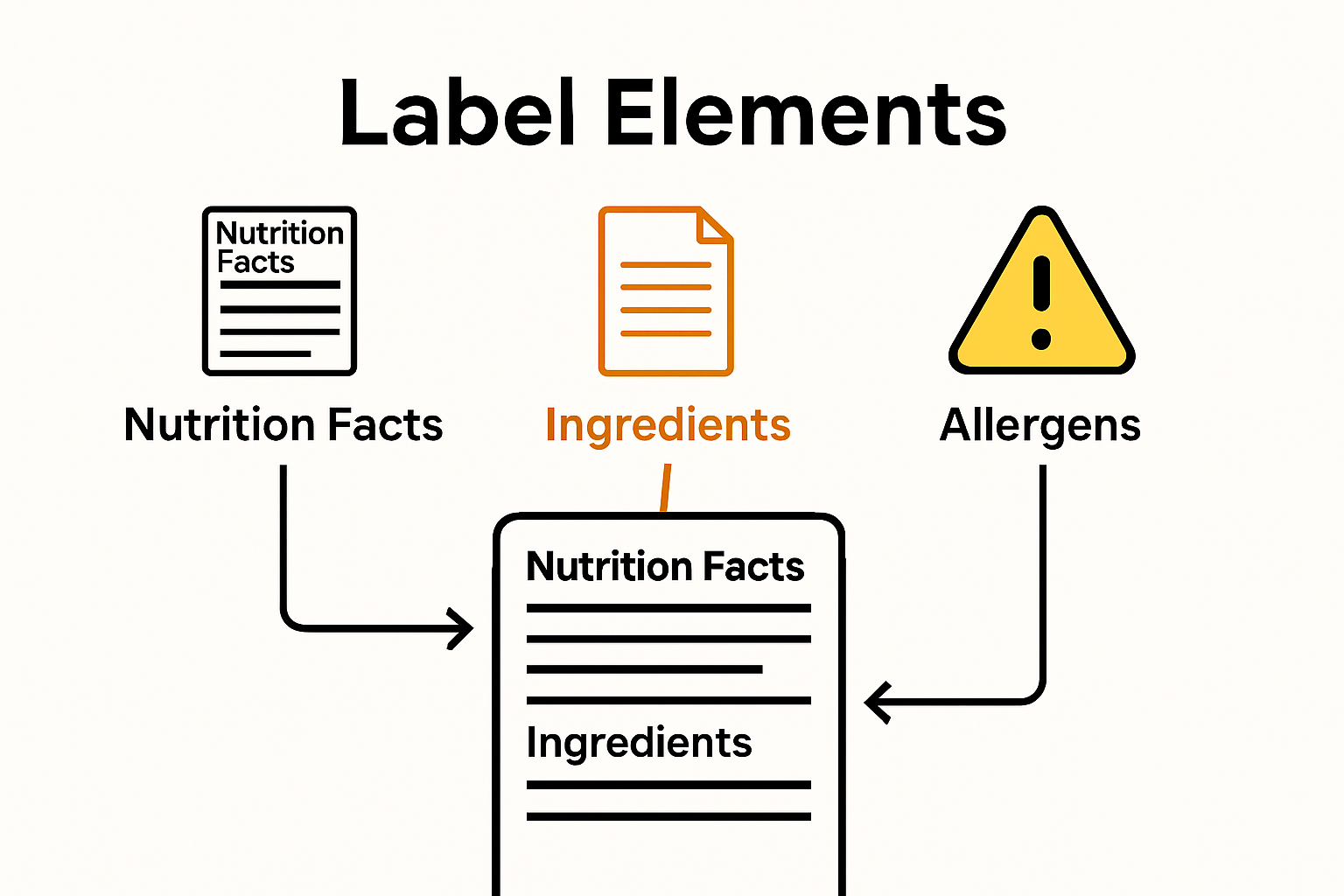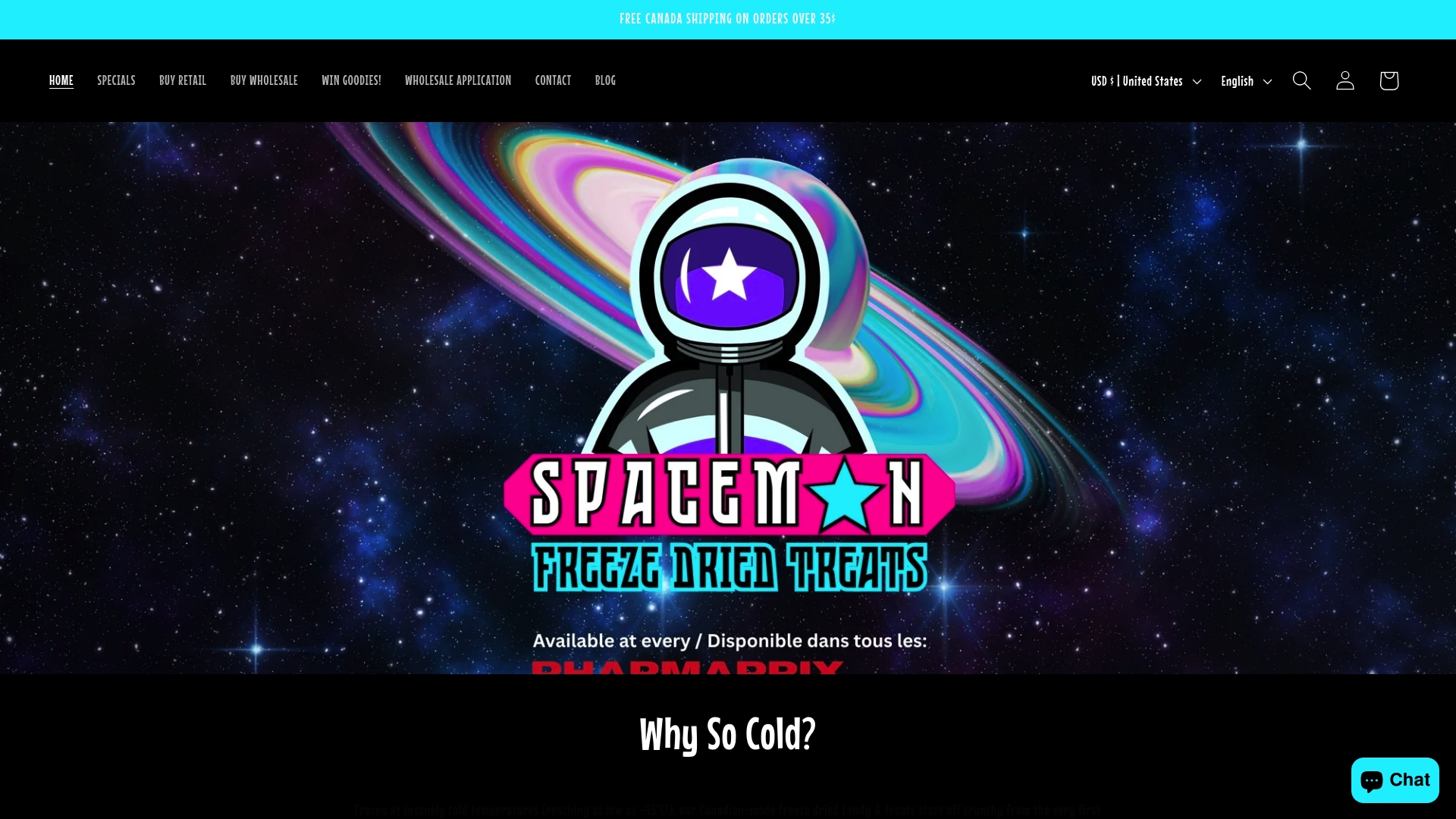
Food labels in Canada do more than fill up space on a package. They are loaded with rules and details that every company must follow, and the Canadian Food Inspection Agency enforces them with serious attention. Most people know to check for calories or ingredients, but failure to comply can actually lead to massive fines and even product recalls. That means the words and numbers on every package could protect your health or end up costing businesses thousands if they get it wrong.
Table of Contents
- What Are Food Labeling Requirements In Canada?
- Why Food Labeling Matters For Consumers And Businesses
- Key Components Of Food Labels: Ingredients, Nutrition Facts, And Allergen Information
- How Food Labeling Impacts Health And Consumer Choices
- Understanding Compliance And Legal Obligations In Food Labeling
Quick Summary
| Takeaway | Explanation |
|---|---|
| Food labeling ensures consumer safety | Regulations help protect health by providing essential information about ingredients and allergens. |
| Labels must include specific components | Essential elements include product name, ingredients list, nutritional facts, and allergen declarations. |
| Compliance is mandatory for businesses | All food manufacturers must adhere to labeling regulations to maintain market integrity and avoid penalties. |
| Clear labels empower informed choices | Detailed food labels help consumers monitor dietary needs and make healthier eating choices. |
| Non-compliance can lead to serious consequences | Failing to meet regulations may result in fines, product recalls, and damage to reputation. |
What Are Food Labeling Requirements in Canada?
Food labeling requirements in Canada represent a comprehensive regulatory framework designed to protect consumers, ensure transparency, and maintain high standards of food safety. Canadian Food Inspection Agency (CFIA) oversees these critical regulations that govern how food products must be labeled for sale across the country.
Core Purpose of Food Labeling Standards
The primary objective of food labeling requirements is multifaceted. These regulations aim to provide consumers with accurate information about the food they purchase, including nutritional content, ingredient composition, potential allergens, and origin. By mandating clear and comprehensive labeling, Canadian authorities help consumers make informed dietary choices and protect individuals with specific health considerations.
Key Components of Canadian Food Labels
Canadian food labeling regulations demand several essential elements on product packaging. Manufacturers must include:
- Product Name: Clear identification of the food item
- Ingredient List: Detailed components in descending order by weight
- Nutritional Information: Standardized nutrition facts table
- Allergen Declarations: Explicit warnings about potential allergens
- Manufacturer Information: Company name and contact details
- Net Quantity: Precise measurement of product volume or weight
These requirements ensure that consumers receive transparent and accurate information about the products they purchase.
Below is a table summarizing the key components required on Canadian food labels and their main purposes to help you easily understand labeling obligations and their importance.
| Component | Purpose |
|---|---|
| Product Name | Identifies the food item clearly |
| Ingredients List | Details product composition in descending order by weight |
| Nutritional Information | Provides standardized nutrition facts for informed choices |
| Allergen Declarations | Warns about potential allergens for consumer safety |
| Manufacturer Information | Offers company contact details for accountability |
| Net Quantity | States exact product volume or weight for transparency |

The regulations are not just bureaucratic checkboxes but critical consumer protection mechanisms. They help individuals with dietary restrictions, health conditions, or specific nutritional needs make safe and informed food choices. Compliance is mandatory for all food manufacturers, importers, and distributors operating within Canadian markets.
Why Food Labeling Matters for Consumers and Businesses
Food labeling serves as a critical communication bridge between manufacturers and consumers, providing essential information that impacts purchasing decisions, health considerations, and overall market transparency. Canadian Consumer Health Organization emphasizes the importance of comprehensive food labeling as a fundamental consumer right.
Consumer Protection and Informed Choices
For consumers, food labels are more than just text on packaging. They represent a crucial tool for making educated dietary decisions. Detailed labeling helps individuals with specific health needs such as managing allergies, tracking nutritional intake, or adhering to dietary restrictions. Labels provide critical information about potential allergens, ingredient composition, nutritional content, and potential health risks.
Business Compliance and Market Reputation
Businesses benefit significantly from accurate food labeling. Compliance with Canadian regulations is not just a legal requirement but a strategic approach to building consumer trust. Proper labeling demonstrates a company’s commitment to transparency and consumer safety. Key benefits for businesses include:
- Avoiding potential legal penalties
- Building brand credibility
- Reducing consumer complaints
- Minimizing potential health risk liabilities
- Establishing clear communication with customers
For businesses looking to enhance their packaging strategies, read our comprehensive guide on understanding the benefits of private labeling.
Moreover, accurate food labeling helps businesses differentiate themselves in a competitive market. It provides an opportunity to showcase product quality, highlight unique ingredients, and communicate brand values directly to consumers. The investment in precise and comprehensive labeling is ultimately an investment in customer trust and long-term business success.

Key Components of Food Labels: Ingredients, Nutrition Facts, and Allergen Information
Food labels in Canada are intricate documents that communicate critical information about product composition, nutritional value, and potential health risks. Canadian Food Inspection Agency establishes comprehensive guidelines ensuring transparency and consumer protection through detailed labeling requirements.
Ingredients List: More Than Just Words
The ingredients list represents a critical component of food labeling, providing consumers with a comprehensive breakdown of product composition. Ingredients must be listed in descending order by weight, allowing consumers to understand the primary components of their food. This systematic approach helps individuals make informed dietary choices, track potential allergens, and assess nutritional value.
Nutrition Facts Table: Decoding Nutritional Content
The Nutrition Facts table provides a standardized overview of a product’s nutritional profile. Typically, this section includes:
- Serving Size: Precise measurement of recommended portion
- Calories: Total energy content per serving
- Macronutrients: Breakdown of fats, proteins, and carbohydrates
- Micronutrients: Vitamins and minerals present in the product
- Percentage Daily Value: Comparative nutritional information
Allergen Declarations: Critical Safety Information
Allergen information is perhaps the most crucial aspect of food labeling. Canadian regulations mandate explicit declarations of common allergens to protect individuals with specific dietary restrictions. Learn more about innovative packaging design that enhances allergen communication.
Allergen declarations typically include warnings about potential presence of:
- Nuts and tree nuts
- Dairy products
- Eggs
- Soy
- Wheat
- Shellfish
- Sesame
These comprehensive labeling requirements ensure consumers can make safe, informed choices about the food they consume, protecting those with potential health sensitivities.
How Food Labeling Impacts Health and Consumer Choices
Food labeling serves as a powerful tool that directly influences consumer health decisions, dietary behaviors, and overall nutritional awareness. Health Canada recognizes food labels as critical mechanisms for empowering consumers to make informed nutritional choices.
Nutritional Awareness and Informed Decision Making
Food labels transform complex nutritional information into accessible insights for consumers. By presenting detailed ingredient lists, nutrition facts, and health-related information, labels enable individuals to understand the nutritional composition of their food. This transparency helps consumers track calorie intake, monitor macronutrient consumption, and identify potential health risks associated with specific ingredients.
Health Management and Dietary Restrictions
For individuals managing specific health conditions, food labels are lifelines. They provide critical information for people with:
- Diabetes management
- Cardiovascular health monitoring
- Food allergies and sensitivities
- Weight management goals
- Dietary restrictions
- Specific nutritional requirements
Learn more about comprehensive food safety regulations that support these labeling requirements.
Consumer Empowerment and Behavioral Change
Beyond providing information, food labels can catalyze broader dietary behavioral changes. Clear, comprehensible nutrition information encourages consumers to make healthier food choices. By understanding the nutritional content of products, individuals can gradually shift towards more balanced diets, reducing risks of diet-related health issues. The simple act of reading a label can prompt reflection on nutritional intake, portion sizes, and overall dietary patterns, ultimately supporting long-term health and wellness goals.
Understanding Compliance and Legal Obligations in Food Labeling
Food labeling compliance in Canada represents a complex legal framework designed to protect consumers, ensure product transparency, and maintain high standards of food safety. Canadian Food Inspection Agency plays a pivotal role in enforcing these critical regulatory requirements across the food industry.
Regulatory Framework and Legal Mandates
Canadian food labeling regulations are governed by multiple legislative instruments that establish comprehensive standards for product information disclosure. The primary legal foundations include the Food and Drugs Act, Safe Food for Canadians Act, and specific regulations developed by Health Canada and the CFIA. These laws mandate that food labels must provide accurate, complete, and truthful information about product composition, nutritional content, and potential health risks.
Mandatory Labeling Requirements
Businesses must adhere to several critical compliance standards when preparing food labels:
- Product Identification: Clear and accurate product name
- Ingredient List: Complete disclosure in descending order by weight
- Allergen Declarations: Explicit warnings about potential allergens
- Nutritional Information: Standardized nutrition facts table
- Manufacturer Details: Company name and contact information
- Net Quantity: Precise measurement of product volume or weight
Learn more about our comprehensive approach to food packaging regulations.
Consequences of Non-Compliance
Failing to meet food labeling requirements can result in significant legal and financial repercussions.
This table outlines the main consequences businesses can face if they do not comply with Canadian food labeling regulations, clarifying the risks to help reinforce the importance of compliance.
| Consequence | Description |
|---|---|
| Product Recalls | Removal of products from the market |
| Financial Fines | Significant monetary penalties for violation |
| Legal Action | Potential lawsuits or government enforcement |
| Reputational Damage | Loss of consumer trust and negative brand perception |
| Increased Inspections | More frequent regulatory scrutiny |
Compliance Made Simple: Partner With Spaceman for Stress-Free Food Labeling
Struggling to navigate the complex world of Canadian food labeling requirements? If you are worried about meeting regulations and ensuring accurate nutrition and allergen information on your freeze-dried candy packaging, you are not alone. Food manufacturers today face mounting pressure to avoid costly penalties and protect consumer trust by complying with exacting standards. The need for clear ingredient lists, nutrition facts, and allergen declarations can feel overwhelming when launching new products or selling wholesale.
Explore our Bulk Unbranded Freeze Dried Candy & Treats for a seamless way to meet regulatory needs.

Ready to simplify your compliance process and grow your business with confidence? At Spaceman, we help Canadian businesses by delivering fully compliant freeze dried candy products, along with private labeling, packaging, and co-packing solutions. Protect your brand and gain peace of mind by exploring our wholesale options or visiting our main site to get started today.
Frequently Asked Questions
What are the main components required on food labels in Canada?
Food labels in Canada must include a clear product name, a detailed ingredient list in descending order by weight, standardized nutritional information, allergen declarations, manufacturer information, and the net quantity of the product.
Why is allergen information important on food labels?
Allergen information is crucial for protecting consumers with specific dietary restrictions. Canadian regulations mandate explicit declarations of common allergens, such as nuts, dairy, and gluten, to help individuals avoid potential health risks associated with food allergies.
How do food labeling requirements benefit consumers in Canada?
Food labeling requirements empower consumers by providing critical information about nutritional content, ingredient composition, and allergens. This transparency helps individuals make informed dietary choices and manage health conditions more effectively.
What are the legal consequences of non-compliance with food labeling regulations?
Businesses that fail to comply with food labeling regulations in Canada may face significant penalties, including product recalls, financial fines, legal action, and reputational damage. Regular inspections by the Canadian Food Inspection Agency (CFIA) ensure compliance and uphold public health standards.

